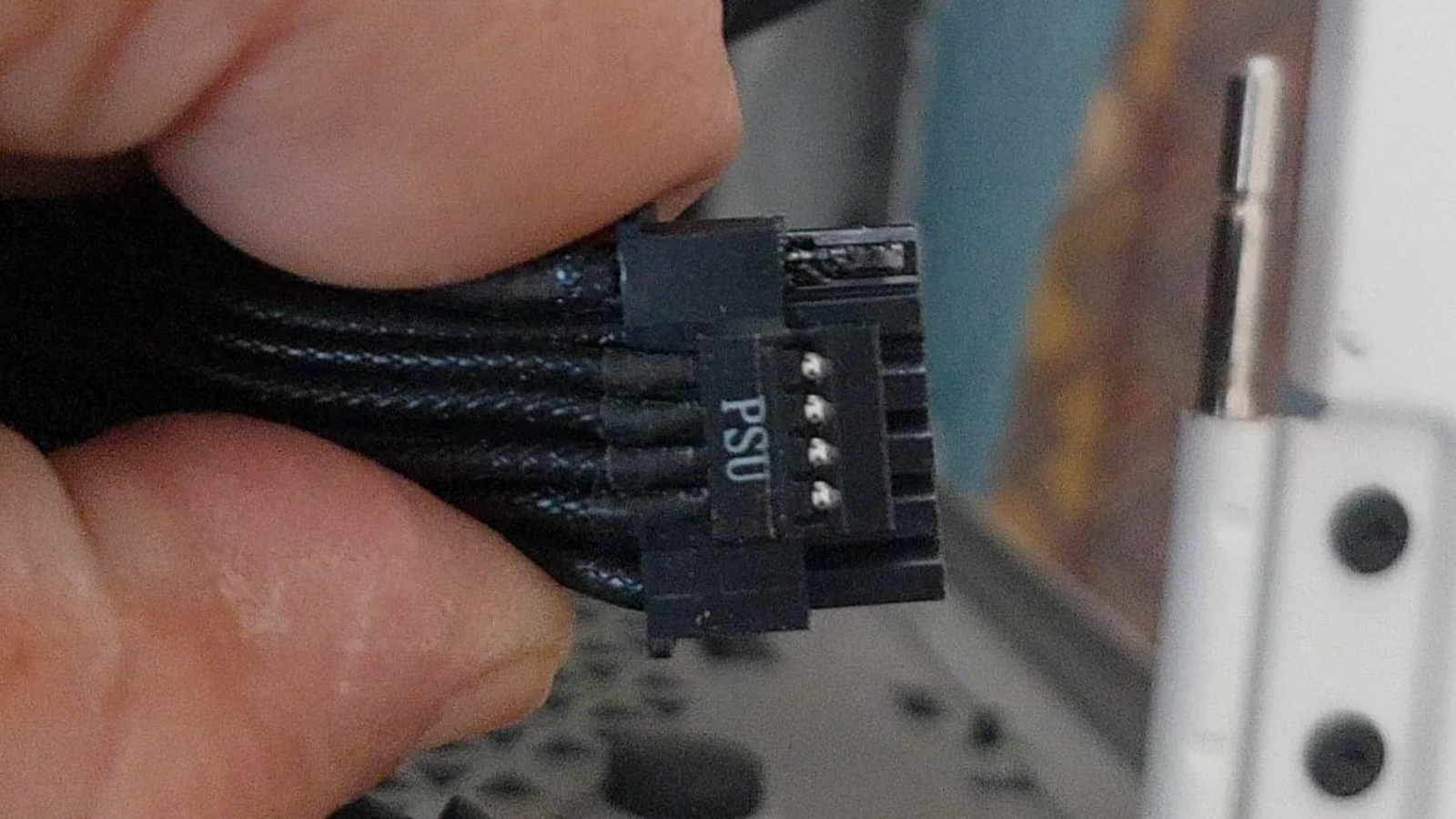Melting RTX cables solution proposed — embed over temperature and current protection on each wire
High-powered cables connected to delicate electronics should have some kind over current and over temperature protection.

Nvidia’s RTX 5090 and 5080 GPUs are facing serious melting connector cables issues, a repeat of the incidents involving RTX 4090 GPUs which the company has previously claimed has already been addressed. However, the number of reports surfacing in recent weeks suggest that that is not the case, so hardware testing group Hardware Busters is proposing two solutions: embed an over-temperature or over-current protection circuit (or both) in the 12V-2x6 cables used by these high-powered GPUS.
Hardware Busters is headed by Aris Mpitziopoulos, who’s also the CEO and Chief Testing Engineer of Cybenetics and established the Cybenetics PSU Certification Program. He has also worked with Tom’s Hardware as a contributing editor for Power Supplies.
According to Mpitziopoulos, one approach is to attach thermistors to the six 12V gauges on the GPU side so that if any particular wire exceeds the given temperature, it should cut the power and prevent damage to the GPU. While this could work, it won’t protect against failures originating from the PSU side, like this melted RTX 5080 cable, which failed under normal load. The other proposed solution would attach current shunts to monitor the amperage that each wire carries. If it detects more than 12 amps for over three seconds, it will open the circuit and cut the power to the GPU, potentially saving it from damage.
He said that the best solution is to have both types of protection on the cables, but that will certainly drive production costs up. Nevertheless, if you’re already spending over a thousand dollars for an RTX 5080 or twice that for an RTX 5090, then spending a little bit more to protect your investments shouldn’t really matter.
This isn’t the first solution that we’ve seen for this melting problem. Some manufacturers like MSI and Zotac have taken steps to ensure that users avoid loose connections by adding a yellow-tipped marking or a safety light. Asus even added per-pin current monitoring on its top-of-the-line RTX 50 Astral model to ensure that you’re warned if your GPU is entering dangerous territory. One Redditor even suggested adding 10-amp car fuses to the cable to prevent it from going over-spec.
Guys I solved it from r/pcmasterrace
However, while some may attribute the melting RTX cables to user error, others are saying that the design itself is deeply flawed. They say that the 12V-2x6 cables seem too thin for the amount of power these brand-new GPUs require and that thicker cables are in order. We hope that the companies involved come up with a standard solution to this problem sooner rather than later. After all, even if consumers are a much smaller slice of Nvidia’s revenue now that AI GPUs are making billions of dollars annually, we’re still an essential part of its history.
Get Tom's Hardware's best news and in-depth reviews, straight to your inbox.

Jowi Morales is a tech enthusiast with years of experience working in the industry. He’s been writing with several tech publications since 2021, where he’s been interested in tech hardware and consumer electronics.
-
Alvar "Miles" Udell Better solution (one I have proposed before): A SINGLE, thicker power delivery wire with the connectors being locking BNC types. Considering the small distance it'd be 6awg at most for 600w (though I'd overengineer it to 4awg), easily within the same space recs as the 12v-2x6.Reply -
mr_stench Yeah... instead of solving the problem, balance and split power delivery rails, let's bus them together at both ends and monitor for "anomalies" which are in fact Inevitable with such a stupid design.Reply
Six thin parallel wires connected to each other through two connectors will never act like one thick wire. -
hotaru251 similar to my view of making the official cables (also doable by 3rd party) have an inline sensor that detects how much voltage is going through each wire.Reply -
tumbbi Yeah.. this is absolute stupidity to propose a solution, which does not solve the actual problem (NVIDIA's idiotic power delivery design). If the PSU and cable manufacturers are sane, they should not listen Aris but put NVIDIA to fix the cards.Reply -
Giroro It doesn't make sense to do any of this in the cable. You'd just the up with a cable so bulky/expensive that the entire point is missed. If it went anywhere, it should go on the card itself, before all the lines get apparently combined into a single rail.Reply
But that would eat a few cents out of Nvidia's offensively extreme profit margins on their stupidly expensive cards. That's not going to happen.
But Nvidia's current strategy of "not actually making any 5090s" will also do a great job of solving the problem.
Think about it. If there's a 1 in 10,000 change that the connector melts, but they only manufacturer 5,000 cards, then it's only a 50-50 chance that even a single cable has a problem.
Sounds like they got unlucky this time, but really it takes 3 or more failures to establish a pattern. -
8086 Reply
AMD has the right approach. Just use more connectors that have worked for a few decades now.UnforcedERROR said:I have a solution: ditch the connector entirely.
